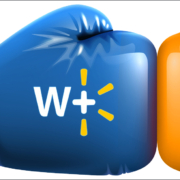Location data is a shiny object, but marketers often get perplexed with how to start using it, or simply dive in without a plan. Yet the building blocks of a geofencing advertising strategy are super simple. So let’s look at 3 easy steps to jumpstart your geofencing strategy…
The process begins by creating geofences around places that your customers frequently visit like stores, restaurants, stadiums, zip codes or cities.
Creating and managing geofence campaigns requires expertise and daily optimization for the best results.
By now most marketers have put in place a few moderately effective always-on digital media campaigns. But more often than not, despite achieving some success, most haven’t significantly evolved their digital strategy and aren’t sure how to level-up their paid media.
Many have heard of geofencing. Some have tried it. But few are maximizing the full potential of this powerful capability.
Walmart is counting on their new Walmart+ membership plan to lure customers away and take sales from Amazon. And there’s good reason to believe that this will happen.
The value of precise data to target your exact customer cannot be overstated. It truly is the most unique thing differentiating ad platforms today.
Boomers spend $230B annually on consumer packaged goods while Gen X’ers spend more on food and wine than any other generation.
So you just returned from a seminar where one of the breakout sessions or maybe even the keynote speaker talked about the marvels of geofencing. Now it’s up to you to figure out how to harness the power of location-based targeting for your company. Here are some things to know about geofencing to get you started.
Reaching consumers in a relevant way is often profoundly tied to place. Historically retailers & suppliers have focused on contextual, physical mediums for tapping the power of place inside the store – signage, displays, shelf talkers and so on. Beacons haven’t really worked. Promotional touch screens don’t get used that much. By and large, efforts to innovate and change the game have failed…
GEOFENCING ARTICLES & VIDEOS
- Geofencing: Location-Based Marketing in 3 Simple Steps
- How geofencing marketing works
- What to look for in a geofencing company
- 3 Strategic Principles to Revamp Your Digital Media
- The Duality of Geofencing: Real-time & Retargeting
- Walmart+ is in PRIME position to win over Amazon shoppers.
- Stop wasting AD Spend
- Who are the new online grocery shoppers?
- 3 things you need to know about geofencing
- The Game Has Changed for Winning at Shelf
HOW WE VERIFY OUR RESULTS
Our Geofencing campaigns are able to track visitors who see your ad - then visit your location. No other ad technology provides this level of 1:1 attribution for measuring ROAS and campaign performance. Using our GeoConquesting tactics, we even track visitors who were at your competitors location - then visit your location.
IP TARGETING - SALES RESULTS
Our IP Targeting campaigns are measured by comparing the homes that saw your ad - directly with your sales results. This match-back process allows you to precisely measure your ROAS. In fact, in is not uncommon for us to see over 25X return on ad spend for IP Targeting campaigns in the auto and furniture industries.










